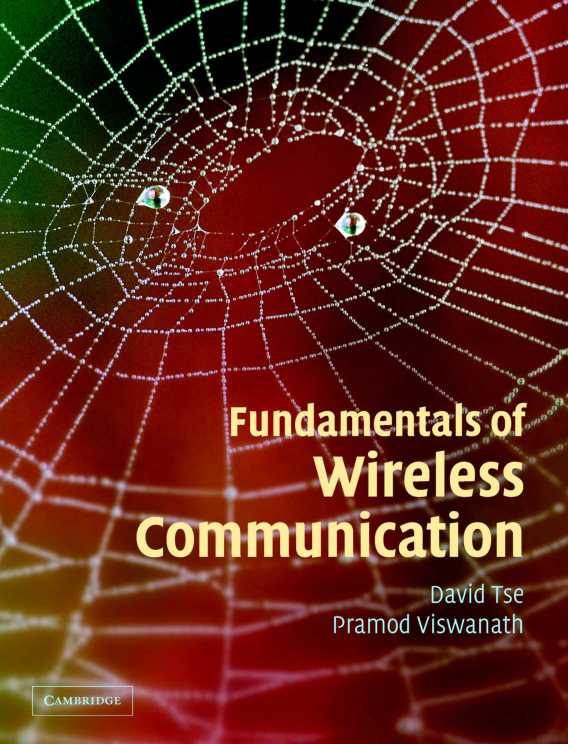
 |
Fundamentals of Wireless CommunicationDavid Tse and Pramod ViswanathCambridge University Press, 2005 |
Now with exercises included!Copyright noticeThe book is copyright (c) Cambridge University Press. The online version of this book (available on this website, now with exercises) is subject to the same copyright rules as traditional books.The electronic copy is in the form of PDF files that can be viewed using Adobe Acrobat Reader version 7.0 (and higher). You can download the latest version of Acrobat reader free from here . |
Book DescriptionThe past decade has seen many advances in physical-layer wireless communication theory and their implementation in wireless systems. This textbook takes a unified view of the fundamentals of wireless communication and explains the web of concepts underpinning these advances at a level accessible to an audience with a basic background in probability and digital communication. Topics covered include MIMO (multiple input multiple output) communication, space-time coding, opportunistic communication, OFDM and CDMA. The concepts are illustrated using many examples from wireless systems such as GSM, IS-95 (CDMA), IS-856(1xEV-DO), Flash OFDM and ArrayComm SDMA systems. Particular emphasis is placed on the interplay between concepts and their implementation in systems. An abundant supply of exercises and figures reinforce the material in the text. This book is intended for use on graduate courses in electrical and computer engineering and will also be of great interest to practicing engineers.ReviewsErrataUpdated as of Feb 18, 2010. Please contact the authors if you have comments or spot more errors.Resources for InstructorsSolutions and Lecture Slides:Solutions to some of the exercises as well as powerpoint lecture slides are available for course instructors. Please go here for instructions on how to download them.Examination Copy:Instructors can also request an inspection copy from Ms. Robin Silverman of Cambridge University Press: rsilverman at cambridge dot org.This book has been used at: U.C. Berkeley, U. of I. at Urbana-Champaign, MIT, U. of Colorado at Boulder, Cornell, Northwestern, U. of Maryland at College Park, Rice, NJIT, UCSD, USC, Princeton, KTH (Sweden), National Chiao Tung University (Taiwan), National Taiwan University, ETH (Switzerland), EPFL (Switzerland) and more than 50 other institutions worldwide. Let us know if you are using the text for a course. Short CourseA 2-day, 12-hour short course based on the book is offered by the authors. This course has been taught at Qualcomm Inc., Tsinghua University, Chinese University of Hong Kong, National Chiao Tung University in Taiwan, University of South Australia in Adelaide, Eindhoven in the Netherlands, Indian Institute of Science, Indian Institute of Technology at Madras, ETH Zurich, Helsinki in Finland, and Technion in Israel. Please contact the authors if your organization is interested. |